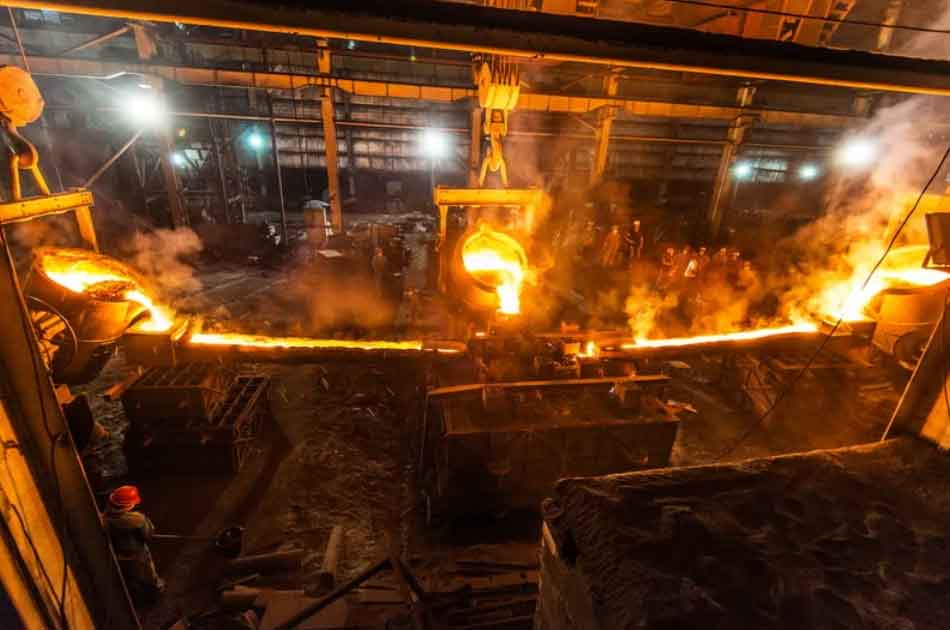Since the 1960s, forsund, Denmark, first applied the finite difference method to study the numerical simulation of solidification process, which opened up a new way for solidification simulation and opened the prelude to the numerical simulation of casting solidification process. Three years later, Henzel and keverian of General Electric Company of the United States applied the general program of instantaneous heat transfer to digitally simulate the automobile cylinder block casting, which was verified by actual measurement. These successful examples make researchers realize that computer simulation of casting solidification process has great potential and broad prospects. Since then, many industrial developed countries in the world have carried out this work one after another, and tried to make numerical simulation practical. During this period, researchers represented by American universities and Japan’s Dazhong Yixiong began the basic research of numerical simulation of solidification process one after another, and made remarkable progress. They deeply studied the calculation method, latent heat treatment, convective heat transfer, boundary conditions, interfacial heat transfer coefficient and feeding distance in the numerical simulation of temperature field in general casting solidification process. The successive solution of these problems has played a great role in promoting the practicability of numerical simulation of temperature field and the research and development of the next stage.
Since the 1970s, many countries around the world have carried out the numerical simulation of casting solidification, which makes the numerical simulation develop rapidly. A large number of studies still focus on the calculation of temperature field and the prediction of shrinkage porosity, shrinkage cavity and hot crack, but at this time, the research has laid a solid foundation for the flow field calculation requiring a higher technical level, and the flow field calculation research of mold filling process has also started. In the calculation of temperature field, all countries have made their own contributions to numerical simulation. Hansen of Danish University of technology used the equivalent temperature to make the thermal conductivity constant in the equation, used the enthalpy method to deal with the latent heat and specific heat of solidification, used the dynamic difference lattice parameters to deal with the shrinkage and expansion of liquid metal, and derived the relationship between the temperature field distribution and the stress-strain rate, so as to predict the thermal crack. V.del. In Norway Davies uses the numerical simulation method to determine the feeding distance of the riser, and determines the position of the riser by calculating the temperature distribution. M.I. thambam and V. panchanathan of Indian Institute of technology simulated the solidification of aluminum alloy in cast iron mold. They pointed out that the heat transfer coefficient between casting and mold is only related to the volume ratio of casting to mold, but not to the thickness of casting. The heat transfer coefficients without coating and with silicon powder coating under different volume ratios are given. In this way, for castings with the same system, as long as the volume ratio is known, the value of heat transfer coefficient can be known, It provides convenient conditions for heat transfer calculation. In Japan, the solidification numerical simulation has been deeply and carefully studied, represented by Dazhong Yixiong and Xinshan Yingfu. Dazhong Yixiong used the direct difference method to simulate the casting. It is also divided into inner node method and outer node method. The direct difference method has clear physical meaning, flexible element division and easy expression for castings with complex shapes, which provides a feasible way to three-dimensional. This method has been used as one of the main methods of numerical simulation calculation. Dazhong Yixiong made a comparative study on several commonly used defect discrimination methods, such as isochronous solidification curve method, temperature gradient method and transmittance gradient method. At the same time, Dazhong Yixiong summarized many years of experience in casting solidification numerical simulation research, formed a relatively perfect system, and made unremitting efforts to improve the calculation speed. Shinyama Yingfu is also quite active in the research of numerical simulation of casting solidification, among which “prediction of shrinkage cavity and porosity position of large steel castings” is considered to be a representative article. A simple simulation method, quasi three-dimensional method, is proposed to solve the prominent problems of large data, large capacity and slow speed in three-dimensional calculation. The basic idea is to simplify the part with three-dimensional heat transfer characteristics in the casting to two-dimensional calculation. Since then, most of the work of shinyama Yingfu has focused on quasi three-dimensional calculation and defect criterion. In terms of calculation methods, he mostly uses the finite difference method. At first, the discrimination method of shrinkage cavity and porosity of steel castings established according to the temperature gradient method is in good agreement with the experiment.
Since the 1980s, with the development of computer technology, solidification numerical simulation technology has developed rapidly again. On the one hand, due to the establishment of new mathematical models and the application of various criteria in the research process, the simulation results continue to tend to the measured results, which indicates that the numerical simulation technology of temperature field has become mature. On this basis, the research of temperature field is developing in breadth and depth. On the other hand, the research of numerical simulation has turned to flow field all over the world, and various calculation methods of velocity field have been established, such as MAC, SMAC and sola, SOLA-VOF, commix, simple and simpler are used to solve the momentum equation and calculate the three-dimensional velocity field in laminar flow. At the same time, due to the new achievements in the basic theoretical research of solidification, it is possible to organically combine the macro simulation calculation with the micro crystallization process.

